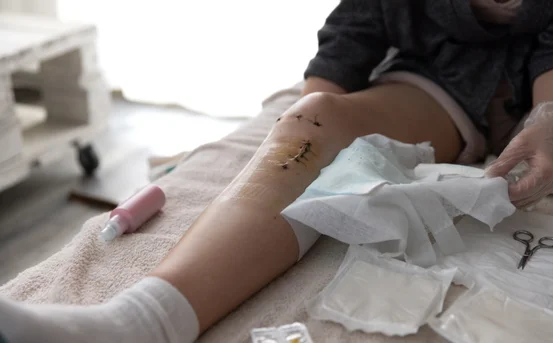Causes for Subcutaneous mastectomy surgery, also known as nipple-sparing mastectomy, is a surgical procedure where the breast tissue is removed while preserving the skin and nipple-areola complex. Unlike a total mastectomy that removes the nipple and areola, a subcutaneous mastectomy maintains much of the breast’s outer appearance, making it a preferred choice in specific medical and cosmetic cases. This procedure is often followed by breast reconstruction to restore the breast’s shape.
The goal of this surgery is to eliminate the underlying tissue that may be affected by disease or poses a risk such as in high-risk cancer cases while ensuring that the visual and structural integrity of the breast remains largely unchanged. This preservation is particularly beneficial for patients who desire a more natural post-surgical appearance and are suitable candidates for immediate or delayed breast reconstruction. In most cases, implants or autologous tissue flaps are used after the mastectomy to restore the breast’s volume and shape, resulting in outcomes that are both medically effective and visually satisfying.
What Is Subcutaneous Mastectomy?
Subcutaneous mastectomy involves the removal of the breast glandular tissue while keeping the skin, nipple, and areola intact. It can be performed on one or both breasts and is commonly used for preventive, cosmetic, or therapeutic reasons.
This surgical option is often chosen for patients who desire a natural-looking breast post-surgery or wish to undergo immediate breast reconstruction using implants or their own tissue.
Who Is a Candidate for Subcutaneous Mastectomy?
Subcutaneous mastectomy is typically suitable for:
- Individuals with benign breast conditions causing symptoms or cosmetic concerns
- Patients undergoing gender-affirming surgery (female-to-male top surgery)
- High-risk individuals considering preventive mastectomy due to genetic factors
- Patients with gynecomastia (enlarged male breasts)
- Select cases of early-stage breast cancer where nipple preservation is oncologically safe
- Benign Breast Tumors or Conditions
One of the most common non-cancerous causes for subcutaneous mastectomy is the presence of benign breast tumors or conditions that create discomfort or cosmetic dissatisfaction. These may include:
- Fibroadenomas :- These are solid, non-cancerous lumps that can become large or painful over time.
- Phyllodes tumors :- Though mostly benign, these fast-growing tumors can recur or become malignant.
- Juvenile hypertrophy :- An abnormal enlargement of the breasts during adolescence causing physical discomfort and psychological distress.
- Gynecomastia in Males
Gynecomastia is a condition characterized by the abnormal enlargement of breast tissue in males. It can be caused by:
- Hormonal imbalances (e.g., during puberty or aging)
- Medications (e.g., anti-androgens, anabolic steroids)
- Chronic illnesses (e.g., liver disease, kidney failure)
- Drug or alcohol abuse
In cases where gynecomastia does not resolve with medical treatment or causes significant emotional distress, a subcutaneous mastectomy is performed to remove the excess breast tissue while preserving the natural contour of the chest.
- Gender-Affirming Surgery (Female-to-Male Top Surgery)
Subcutaneous mastectomy plays a pivotal role in gender-affirming surgeries for transgender men or non-binary individuals seeking masculinization of the chest.
- The breast tissue is removed
- The skin, nipple, and areola may be preserved, resized, or repositioned
- The goal is to create a male–contoured chest
This surgery not only transforms physical appearance but also greatly improves mental health, body image, and gender dysphoria for many individuals.
- Prophylactic Mastectomy for High-Risk Individuals
People with a high genetic risk for developing breast cancer often opt for preventive mastectomy to significantly reduce their risk.
- BRCA1 or BRCA2 gene mutations
- Strong family history of breast or ovarian cancer
- Personal history of atypical hyperplasia or lobular carcinoma in situ (LCIS)
In such cases, subcutaneous mastectomy allows for maximum risk reduction while preserving the cosmetic appearance of the breasts. It is often paired with immediate breast reconstruction using implants or autologous tissue.
- Select Cases of Early-Stage Breast Cancer
While subcutaneous mastectomy is not the standard treatment for invasive breast cancer, it may be considered in carefully selected cases of:
- Ductal carcinoma in situ (DCIS) or early-stage breast cancer that doesn’t involve the nipple
- Tumors located far from the nipple
- Patients strongly desiring nipple preservation
In these situations, oncologists and surgeons work together to ensure that nipple-sparing surgery is safe from a cancer recurrence standpoint. The preserved tissue is carefully examined to confirm it is cancer-free.
- Cosmetic Breast Surgery
Some patients opt for subcutaneous mastectomy as part of cosmetic breast surgery, particularly those with:
- Excessively large breasts causing pain and mobility issues
- Recurrent infections or rashes under the breast fold
- Desire for smaller, more proportionate breasts with improved contour
In such cases, breast tissue is removed while maintaining the external skin and nipple for a natural look. Implants or reshaping techniques may be used to enhance the final aesthetic.
Risks and Considerations
Like all surgeries, subcutaneous mastectomy carries certain risks, such as:
- Infection or bleeding
- Loss of nipple sensation
- Necrosis (tissue death) of the nipple or skin flap
- Incomplete removal of at-risk tissue (in high-risk or cancer patients)
- Scarring or asymmetry post-reconstruction
Recovery After Subcutaneous Mastectomy
Recovery times can vary based on the complexity of the procedure and whether reconstruction was performed. Most patients can expect:
- 1 to 2 weeks of rest with limited physical activity
- Drain tubes that are removed within a few days to a week
- Follow-up visits for wound care and monitoring
- Gradual return to normal activities in 4 to 6 weeks
Conclusion
Subcutaneous mastectomy is a versatile surgical option used for a range of medical, preventive, cosmetic, and gender-affirming reasons. Whether performed to address benign tumors, reduce cancer risk, treat gynecomastia, or support gender transition, this surgery offers a balanced approach between medical safety and aesthetic preservation.
If you’re considering subcutaneous mastectomy or have been recommended by your doctor, ensure you consult with a qualified breast or plastic surgeon to understand the best approach for your individual case.























